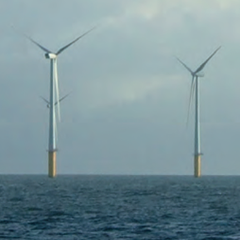Going through the certification process for a wind turbine, support structure or substation related to the wind farm ensures that your asset adheres to required industry standards and best practice, and hereby reduces the total risk during the life cycle of the project. However, in a market with tight time schedules and scarce resources, it is important to understand the mechanisms of the certification process and how to interpret the regulatory requirements to meet project milestones.
Savings can be made
Since 2009, DNV KEMA has been delivering a seminar on the certification process several times a year. The objective of the seminar is to prepare project partners for the tasks ahead and establish an understanding regarding the level of interaction needed for the process to be efficient. The seminar is designed to provide an understanding of the DNV certification system including:
• client deliverables (documentation requirements according to DNV and IEC) verification activities for each technical discipline and module of the certification system, ref. Figure 1.
• DNV deliverables (technical reports, statement of compliances and certificates)
Typically, a wind farm project involves multiple project partners and combined with multiple technical disciplines, as illustrated in Figure 2, it is obvious that project management can be challenging. Understanding the verification process, the requirements according to DNV standards and related international standards, as well as the interfaces will enhance the design process.
The seminar also demonstrates how certification can be divided into stepwise approvals, which allows the project manager to make status and communicate how much of the needed documentation for a prototype-certification, for example, has been approved.
Technical engineers benefit from examples showing actual solutions to documentation for certification as well as discussions on how to deal with, for example, novel design methodologies or topics not covered well in standards. One such topic is geotechnical design. It is not straightforward to establish unambiguous rules and regulations for soil investigation and geotechnical design.
The soil conditions may be uniform and well defined, or extremely varying and complex and the amount of soil investigations necessary will therefore vary significantly. The type of foundation structure intended for the wind farm will also have influence on the type of soil investigation that is needed. The design of a monopile is dependent on the dynamic soil stiffness and damping properties, while the design of piles for a jacket will be governed by soil friction and reduction of friction capacity in tension due to cyclic loading. The session on geotechnical design presents various issues that may govern the geotechnical design, and the DNV KEMA approach to certification of the same. A detailed programme of the seminar is available from www.dnvkema.com/windenergy.
The seminar lasts three days. Day 1 covers type certification (EUR 750/person), while Day 2 and 3 relate to project certification (EUR 1000/person). The seminar is run by eight to ten senior and principal engineers working with certification on a daily basis at DNV KEMA.






























